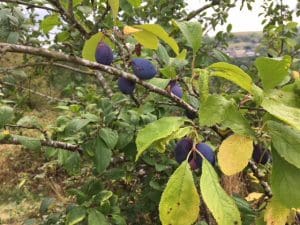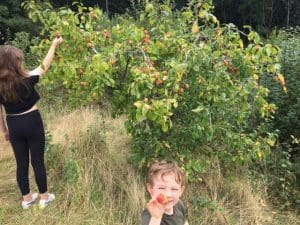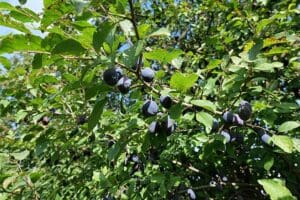Wild Plum / Spring / Summer / Autumn / Edible
Wild Plums are a common sight on these shores and as all members of the plum family are edible they are really beginner friendly. Typically appearing as a large bush or small tree, up to 8m in height.
Wild Plums aren’t technically wild, they are feral and grow from the seeds of cultivated plums, which is thought to be a crossbreed of sloes (Prunus spinosa) and cherry plums (Prunus cerasifera). Every generation of Wild Plums tries to revert back to their wild ancestors and the fruits become progressively smaller and sourer.
There are also several subspecies of Prunus domestica including Greengages, Mirabelle plums and Damsons.
Common Names
Wild plum, Plum
Botanical Name
Prunus domestica
Scientific Classification
Kingdom – Plantae
Order – Rosales
Family – Rosaceae
Physical Characteristics for Wild Plum
Leaves
The leaves can vary quite a lot depending on the exact subspecies but tend to be oval to teardrop shaped, They have serrated margins and are smooth on top and typically downy underneath. Around 4-8 cm long, they are deep green in colour.
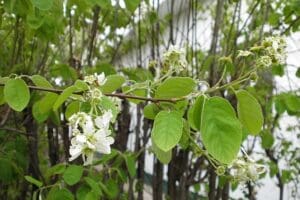
Flowers
The flowers typically appear around the same time as the leaves. They have 5 petals and are white to pink in colour. The flowers grow in clusters of 2-4 on very short stalks
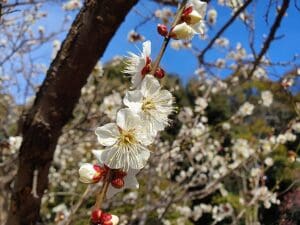
Fruit
The fruit, technically a drupe (a fruit that has seeds surrounded by rock-like pits.) again can be quite variable depending on the subspecies. They are smooth, round to oblong in shape and typically between 4-6 cm long. They can be deep purple, red, yellow or green in colour. The fruits of all Prunus species contain one, large flat seed or ‘stone’.
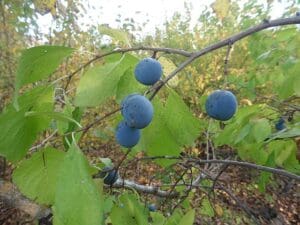
Habitat
They are common in hedgerows, woodland edges, parks and wastelands. They fruit best in sheltered spots with some protection from the elements.
Known Hazards
The only toxins in plums are in the stones, plums stones and the seeds of many other plants, such as pears and cherries contain amygdalin, a cyanogenic glycoside composed of cyanide and sugar. When metabolised in the digestive system, this chemical degrades into highly poisonous hydrogen cyanide. A lethal dose of hydrogen cyanide can kill within minutes.
But before you get too worried the seeds need to be crushed or powdered (whole seeds will pass through your digestive tracts whole) and we are able to process small amounts of hydrogen cyanide, so swallowing a couple of stones would be harmless. Normal consumption is quite safe.
Could be Confused with
Other plums, but as I said all members of the family are safe to eat. Really, taste tells you what to do with them.
Edible Uses of Wild Plum
Depending on their sweetness they are lovely eaten straight from the tree when ripe. You’ll know they are ripe when they come away from the stems easily or you’ll see fallen fruit on the ground. They can be picked slightly unripe and then left to ripen at home for a few days.
In general the larger fruits are sweeter as they are closer to their domesticated relatives and the small ones are sometimes so sour they’re only good for sloe gin style liquors and wine.
As well as using them in desserts such as pie and crumbles they’re great in savory recipes too. I stew them down with Chinese spices, soy and vinegar to make a sauce to serve with pork. They also work really well in salads.
The flowers are also edible and have a lovely almond flavour. They are great as a garnish for desserts, added to salads or can be dried and infused in alcohol.
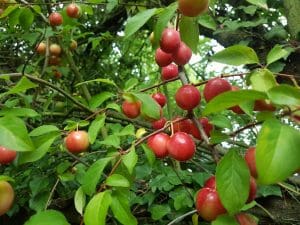
Notes on Herbal Uses
There are many health benefits to eating Plums. They are high in phytochemicals and nutrients that lower the inflammation that triggers heart disease. Plums, like prunes, have a lot of sorbitol, a sugar alcohol that acts as a natural laxative. The potassium in Plums is good for blood pressure control as it helps your body get rid of sodium, it also lessens tension in the walls of your blood vessels. When your blood pressure is lower, your odds of getting a stroke go down.
They are rich in antioxidants which protect the body against the cell and tissue damage that can lead to diabetes, Alzheimer’s disease, Parkinson’s disease, and cancer.
They are also high in soluble fibre which helps slow down a blood sugar spike after you eat.
Research on animals shows prunes (dried plums) may help reduce bone loss, and may even reverse it.
Extra notes from the Foragers
Plums can be found almost everywhere in the world apart from Antarctica. They are the world’s second most cultivated fruit after tomatoes!
Plums play an important role in traditional Chinese culture, the five petals represent the Five Blessings: old age, wealth, health, love of virtue, and a natural death. It is a common motif during Lunar New Year celebrations.



